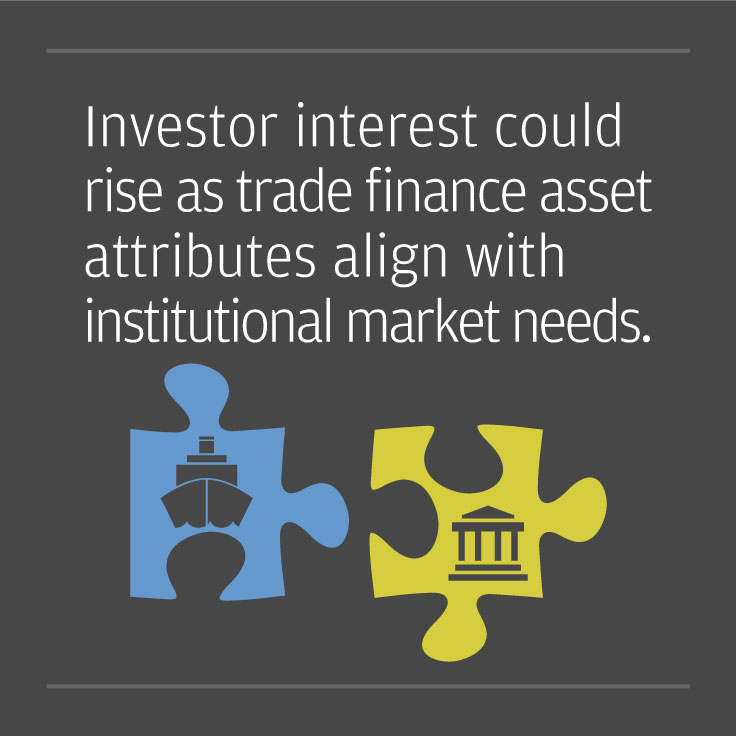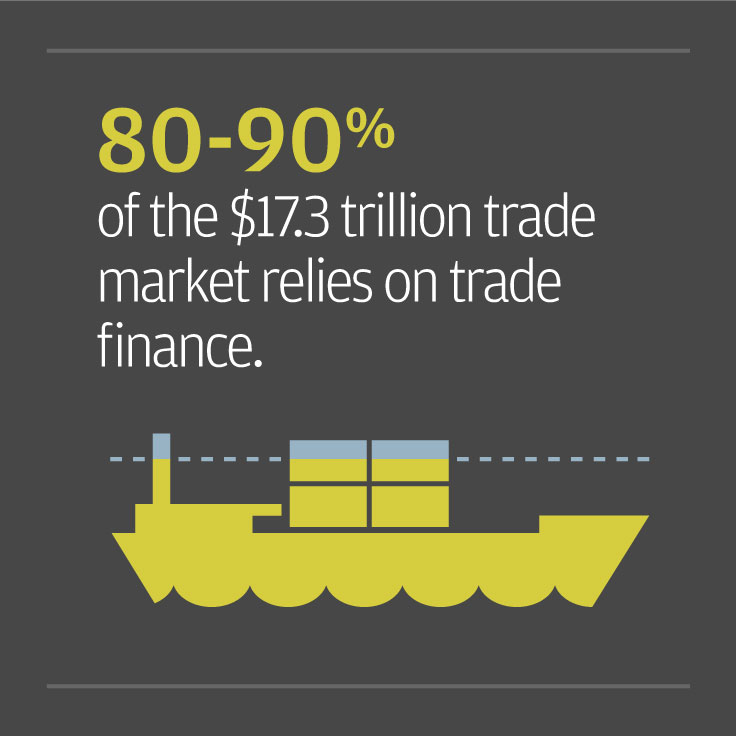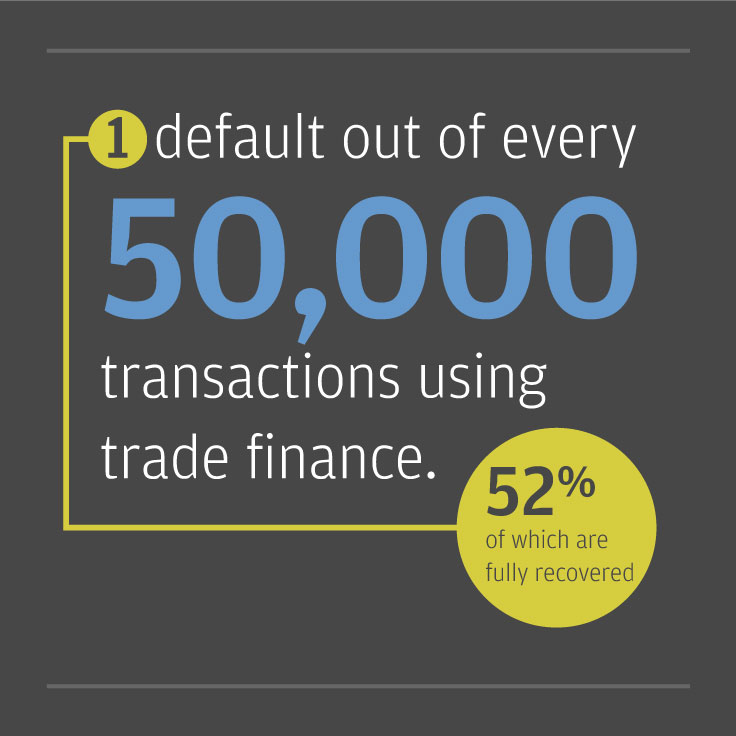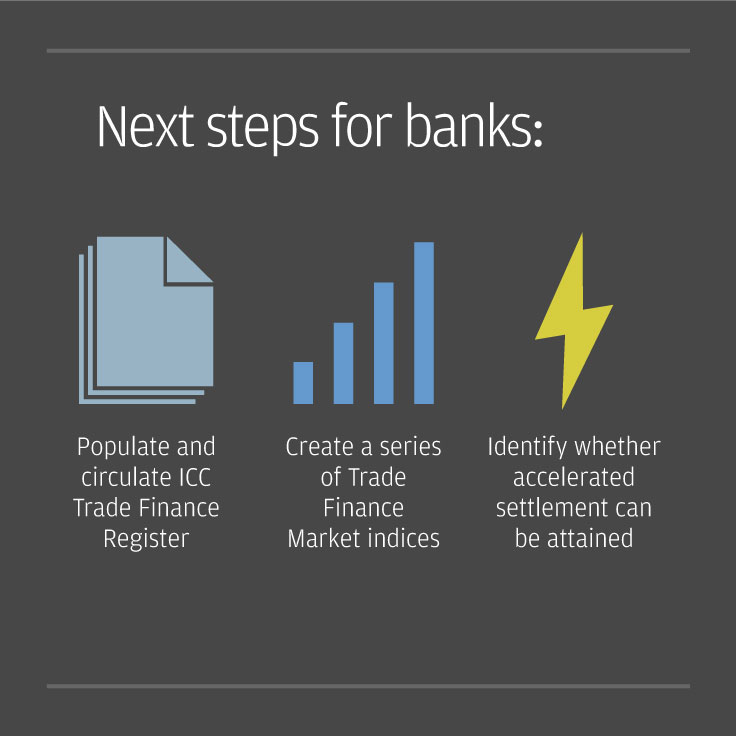Why is the market not stronger?
One reason is that investors aren’t aware of the benefits. In addition, data is in short supply and documentation needs to be standardized.
The availability of relevant market information is critical since access to data on the underlying assets is essential for investors to make decisions. For evaluative purposes, investors require benchmarks that are reliably quantitative, not purely anecdotal, to estimate how much they may make or lose on investments and the favorability of pricing. Standardization of documentation will allow information to be aggregated more easily and encourage investors to view trade finance assets as easily understandable.
Developing an appropriate awareness of trade finance assets will help create the necessary market attention to drive industry bodies to collaborate with banks. So far, traction in promoting investment in trade finance assets has led the U.S. National Association of Insurance Commissioners to evaluate working capital finance investments as an investment opportunity for the insurance industry.
Various banks have worked together to contribute to the ICC Trade Finance Register, a project to advance understanding of trade finance products and their risk characteristics, but work remains. As the Trade Finance Register provides more transparency into the trade finance risk profile, investors may be more willing to invest in trade finance assets. But banks must also be willing to share data at a more granular level for the register to play a meaningful role for institutional investors.
Information is especially important for certain types of investors, such as pensions. Defined benefit plans in the U.S. are required by the Employee Retirement Income Security Act (ERISA) to exercise appropriate due diligence when making investment decisions. Not all plans have the resources to appropriately investigate potential investments that are not well understood, so the dissemination of this information would only support the asset class.












